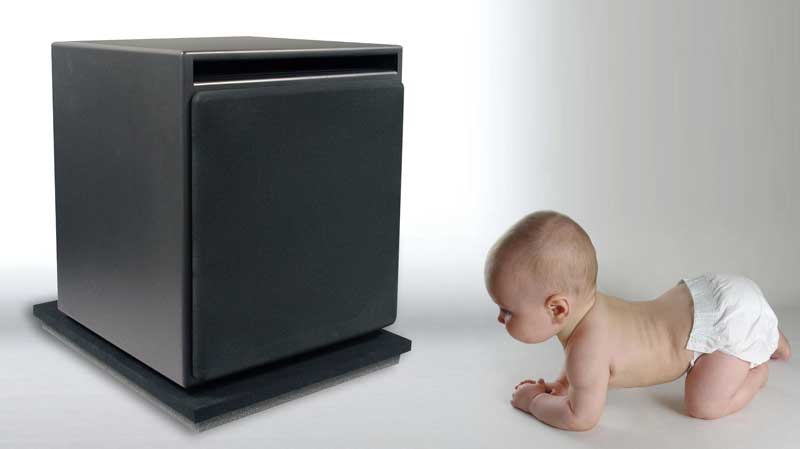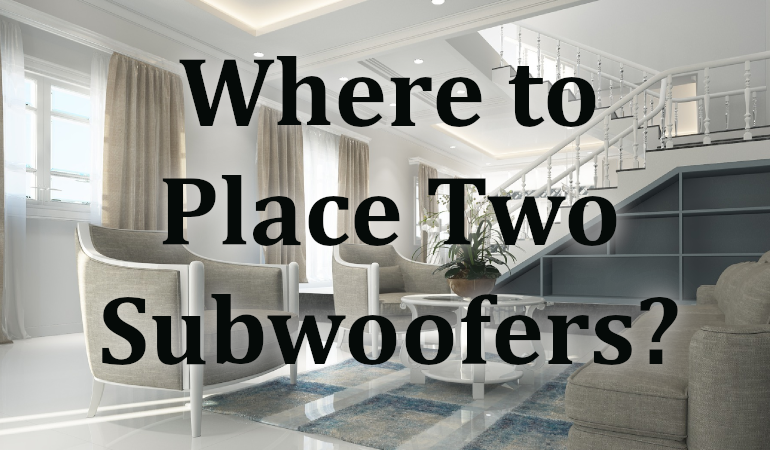Where to Place Two Subwoofers in a Non-Rectangular Room
The common logic is that two subwoofers are better than one. People online spout that advice constantly. They often give the wrong reasons. They’ll say dual subs will give you lower bass (it won’t). They’ll say it will give you more output (it will, but not as much as they seem to think). What it will give you is more uniformity. But only if you place them correctly. The problem is that last part. Proper placement often relies on you having a rectangular, enclosed room. That is rarely the case. So if your room is non-rectangular, where do you place your two subwoofers? Let’s discuss.
There is No One Answer
Unlike placing two subwoofers in a rectangular room where there are specific guidelines and recommendations, non-rectangular rooms have no absolutes. If you thought there should be some sort of online calculator to help, something where you could insert the exact dimensions of your room and it would spit out the perfect placements, it doesn’t exist. The fact is that sound waves are just too complex to model. There are too many variables that affect how they will interact with the walls, furniture, and other objects in your room. Modeling it just isn’t feasible at this time. That means we can only give you recommendations based on best practices.
The Subwoofer Crawl is Not The Answer
You may have heard that the subwoofer crawl is where you start. The subwoofer crawl is often used to find the best place for a single subwoofer. But if you have a non-rectangular room, and the recommendations for two subwoofers no longer apply, using the crawl method to place both seems to be the next logical step.
It seems that way, but it is wrong.
The subwoofer crawl can work for your single sub, but the minute you add that second subwoofer, the interaction of the two will negate any advantages the crawl gave you. No, we are going to need to get more scientific if you are going to find the best starting locations to place your two subwoofers in your non-rectangular room.

Room Modes
You may have heard of room modes in the past. Room modes are based on the distance between two parallel surfaces (walls) in your room. There are calculators online but the basic idea is that the distance between the two surfaces will cause predictable interactions between the sound waves in your room. In a rectangular room, placing two subwoofers properly will mitigate these effects. In a non-rectangular room, we cannot tell you where to place your two subwoofers predictably for all the room modes. But we can for some!
Midpoints of Two Parallel Surfaces
Your best bet when placing your two subwoofers is to start at the midpoints of two parallel surfaces (walls) in your non-rectangular room. By placing them in these locations, you know (mathematically and practically) that those room modes will be mitigated. Is this a set them down and never move them again situation (as it is if you had a rectangular room)? No. You have (one would assume) multiple parallel surfaces. Try more than one if you have the option.
Follow our Dual Subwoofer Setup Guide
In the end, you’ll have to determine a placement for your subs that may or may not line up with our recommendation. We understand that you have to live in this house. You may not want to have a subwoofer (or two) in the places that we suggest. In our Dual Subwoofer Setup Guide, we have recommendations for how to place and dial in two subwoofers in both rectangular and non-rectangular rooms. Check it out!


